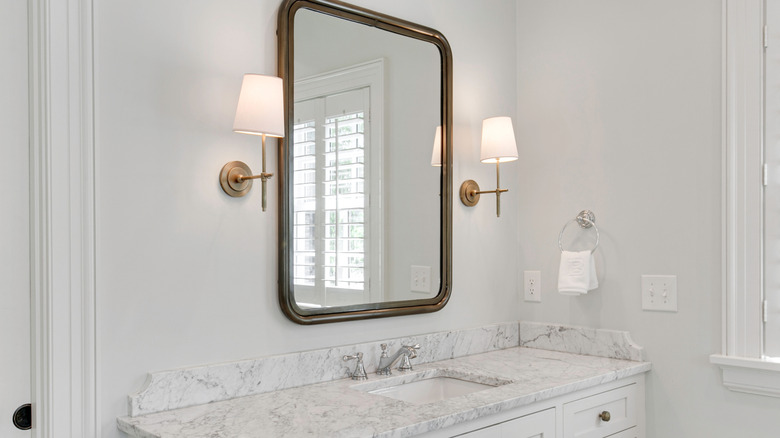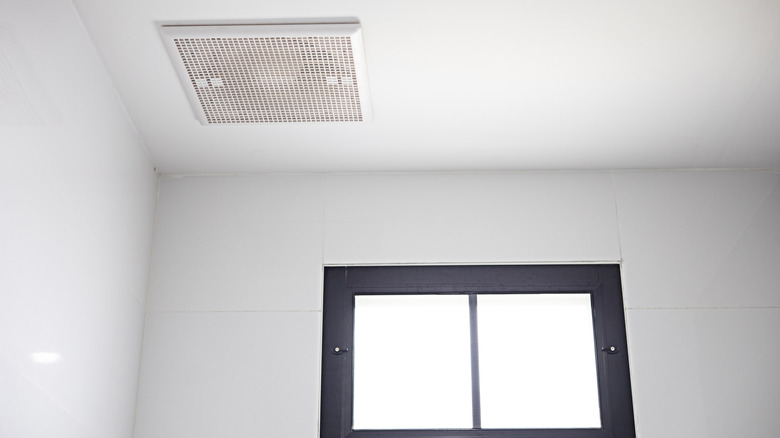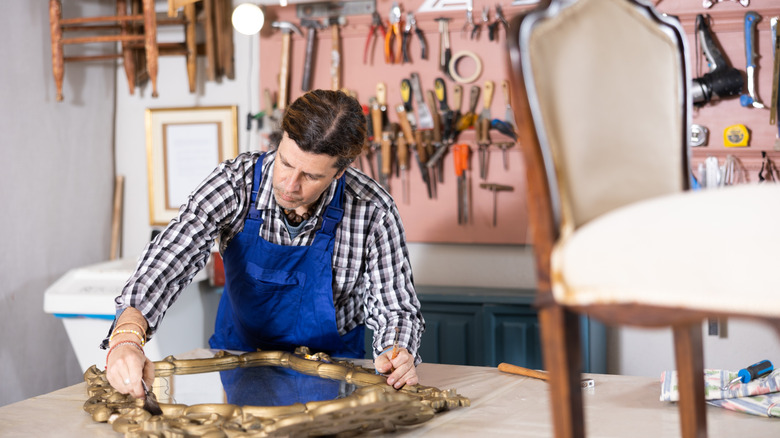Why Your Bathroom Mirror Has Black Spots (And How To Prevent Them)
Yikes — you looked at your bathroom mirror and noticed small black spots forming around the edges. You decide to keep your mirror clean and fog-free with something you already have in your kitchen and get to work. You scrub and scrub and scrub, but nothing seems to get rid of this eyesore. Unfortunately, no matter how much cleaning solution or elbow grease you put in, these marks never disappear. So why does your bathroom mirror have black spots and how can you prevent them?
Those small black spots you see on your bathroom mirror's edge is a process known as desilvering, where the silver backing on your mirror begins to wear away due to moisture. Areas with high levels of humidity like your bathroom can turn your beaut of a mirror into a black dot monster. However, don't feel discouraged or even toss out your bathroom mirror just yet. There are ways to prevent these black spots from making an appearance as well as salvaging your favorite or vintage mirror through a process called resilvering.
Preventing black spots on your bathroom mirror
Just because black spots appeared on your last mirror, doesn't mean you can't protect your next mirror from those unsightly marks. Preventing this process from happening is quite simple. All you need to do is ventilate your restroom. There are many different ways to do this, but the best way to vent your bathroom to keep it mold-free and to stop black spots is with an exhaust fan.
The best time to use your exhaust fan is while using your shower or bath: Turn on the fan and leave it going for about 15 minutes after you finish. However, don't forget to turn it off since your ventilation system still uses electricity — set a timer on your phone so you don't forget. You can also open your bathroom windows to naturally ventilate the space.
Is resilvering your black-spotted bathroom mirror worth it?
Sometimes, we can't part ways with a mirror we love. And you don't have to if you're ready to put in the time and work that comes with resilvering. Resilvering is the process of removing the deteriorated silver backing and reapplying a solution that creates a chemical reaction to help the new product adhere to a mirror. As a time consuming and messy process, it is easier to leave resilvering to the professionals. However, that comes with its own pitfalls since there are not many resilvering experts in the industry and transport and delivery can cause more damage than good.
It's imperative to know that these chemical solutions don't fix cracks or chips on your reflective surface, but instead, could make them more prominent; if your bathroom mirror has more damage than you want, consider replacing it entirely. If you go the resilvering route, don't let your efforts go to waste and consider adding a frame. Frames can act as an extra protective layer, stopping moisture from coming in contact with your mirror's edges. Plus, frames work as a great decorative piece, which we call a win-win in our books. You can find tons of frames online, but you can also follow some DIY mirror frame ideas that turn plain home décor item into a statement piece.


